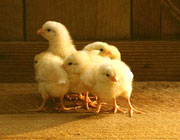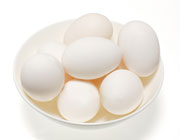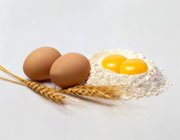Eggs are a healthy, very complete and nutritive food. It was one of the first food used by mankind, and it is consumed worldwide.
An egg mainly consists of a central yolk, surrounded by the albumen or egg white. All this is encased in a round or oval shell. Approximately 31% of the egg is the yolk, 58% is the egg white, and 11% is the shell. Only the yolk and white are of interest for our diet and nutrition.
The shell is the outer cover of the egg and it is of great importance as it protects its physical integrity and acts as a bacteriological barrier. Its composition is mainly a numeral matrix with an organic structure, of which the most abundant and important element is calcium.
The quality and resistance of the shell depends essentially on the hens' mineral metabolism and also, on a correct diet. Other elements that have an influence on the quality of the shell are genetics, sanitary conditions and environment temperature.
The egg white or albumen consists mainly of water (88%) and proteins (about 12%). The most important element of an egg is the albumen and not only in quantitative terms (54% of the total protein) but also for its properties. It is of special interest both from a nutritive and a culinary point of view.
The Haugh (UH) units are a measure that correlates the height of the egg white (in mm) with the weight of the egg and this is used as an indicator of freshness. The richness in essential amino acid protein in the egg white and the balance between them makes this a reference in assessing the quality of the proteins in other food. When cooking, the egg albumen is of special interest as it is used in the elaboration of many dishes because of the gelatinous state that it acquires when heated.
About half of the total protein in an egg can be found in the egg white and there is no presence of lipids. There is a greater amount of vitamin B12 and niacin in the egg white than in the yolk.
The yolk is the orange central part of the egg. It is surrounded by the vitelline membrane, which gives it its shape and keeps it separated from the white or the albumen.
In the egg yolk we can find the main vitamins, lipids and minerals. This is why it is the most valuable part of the egg. Its contents in water is approximately 50%. Occasionally you can come across eggs with two yolks. This is because the hen, in the same ovulation, produces two ovules instead of just one. This physiological "accident" is more common in the fowl at the beginning of their laying period.
The reddish and brown marks which sometimes appear inside the egg must not be mistaken with the embryonic development. These are caused by tiny pieces of the reproductive systems being caught in the production of an egg. It is relatively common and quite safe to eat.
Eggs can be white or brown. Their colour is determined by the hen's strain and has nothing to do with their quality, nutritional value or taste.
Eggs can be consumed at any time of the day. Their digestibility only depends on their elaboration. Boiled eggs are more digestible than fried eggs and the consumption of raw eggs is not recommended.


